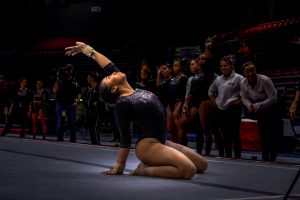Suggested kiosk to lower circulation of illegal fliers
November 16, 1988
In an attempt to curb the number of illegal fliers circulated on campus, the Student Association’s Public Relations Committee will formally propose that a kiosk be built in the King Memorial Commons.
The kiosk, an eight-sided structure similiar to the one used by the post office located on the east side of Neptune Residence Hall, will display fliers approved by the University Programming and Activities Office.
SA Public Relations Adviser Tana Titre said the plans will be submitted to the commons’ planning committee at the Nov. 22 meeting. The public relations committee also will ask for money to help fund the kiosk, she said.
Titre said the total cost of the kiosk is between $4,500 and $5,500. The SA’s portion of funding will come as a special allocation from the supplemental funding budget, and she said she hopes that amount will be about half of the total.
Titre said she does not expect a lot of problems with the kiosk proposal because the commons’ planning committee has set aside a place for a kiosk in the commons’ renovation plans.
However, the kiosk site set aside by the commons’ planning committee is not the same as the public relations committee’s, she said.
“The eight-sided outdoor bulletin board” will be made of treated wood that is fire and weather proof, she said. Fliers will be protected from the weather and vandals by locked Plexiglas doors.
SA Sen. David Burke said the approval process for fliers will remain the same. Once the fliers are approved by UP&A, the public relations committee will post the fliers in the kiosk, he said.
Burke said the kiosk will help prevent illegal fliers from appearing on campus and allow UP&A and the public relations committee to be “twice as strict” in the enforcement of illegal fliers.
Burke said the SA’s proposal would place the kiosk on the south side of the Holmes Student Center.
Mike Lee, a public relations committee member last semester, said the kiosk will stand about eight feet tall with a five foot base. Lighting for the kiosk will be placed inside an overhang extended two feet from the top of the structure, he said.
Lee said the kiosk will deter students from taping fliers to the ground and writing on the ground with chalk because people will recognize the kiosk as “an informational center.”
“The kiosk idea was conceived a couple of years ago,” but was not built because of insufficient funds, Lee said.
Physical Plant Engineer Rolland Schreiber drew the kiosk blueprints.






